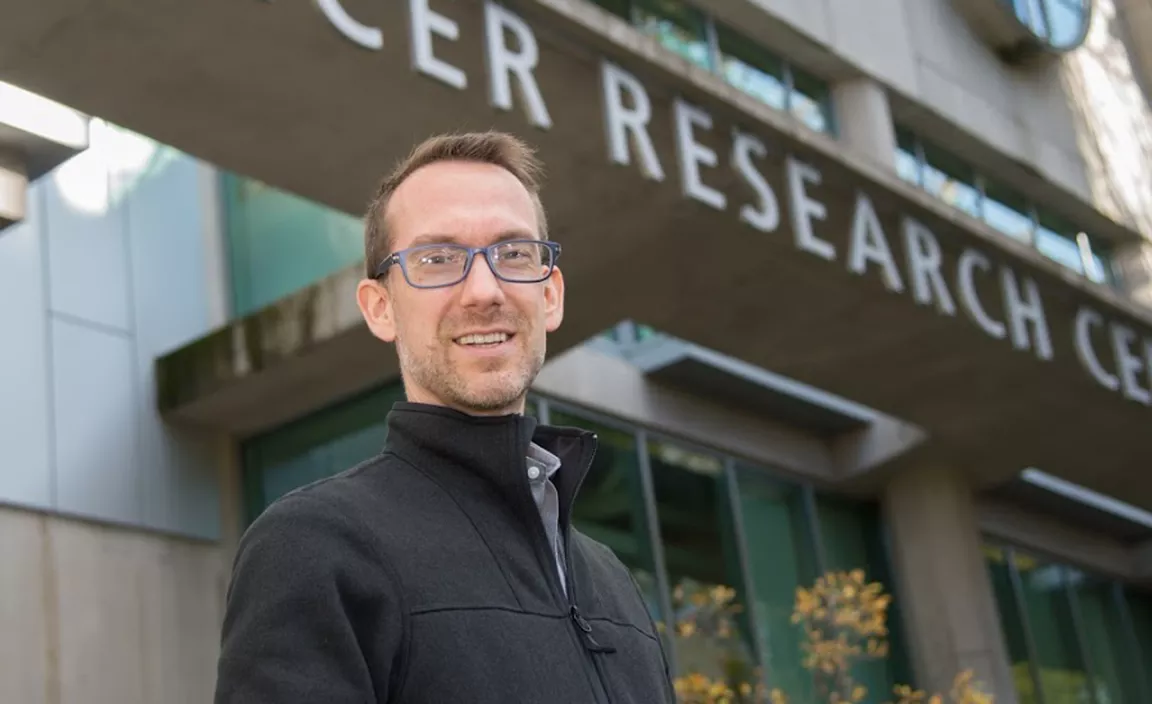New radiotherapy technique improves survival for metastatic cancer patients

In the first randomized, phase II clinical trial of its kind, an international research team, including Dr. Rob Olson with the Northern Medical Program (NMP), has shown that an aggressive form of high-precision radiation therapy can greatly increase how long oligometastatic patients live (those with cancers previously treated but which later spread to a few other parts of the body) and doubles how long they live without cancer.
The team, led by Dr. David Palma (London, Ont.), will present their findings at the 60th Annual Meeting of the American Society for Radiation Oncology (ASTRO) next week. One fifth of the patients for the study were accrued from B.C., an initiative led by Dr. Olson, the provincial principal investigator.
“The conventional wisdom is that when a patient has cancer that has spread (also known as metastasized) to other parts of their body such as lung, brain, or bone, they were considered to be incurable, and radiation was reserved to alleviate symptoms,” said Dr. Rob Olson, NMP associate professor; division head of radiation oncology, Department of Surgery, UBC Faculty of Medicine; and radiation oncologist and department head at BC Cancer – Prince George. “We designed this study as an initial test to see whether high doses of ablative radiotherapy targeted very accurately to the metastases can improve outcomes without introducing too many side effects.”
Generally, when a patient has a cancer that has spread to other parts of the body — called metastatic cancer — they are considered incurable. This multi-centre trial challenged this idea by studying patients with a variety of oligometastatic cancers — that is, cancers that had been previously treated but then returned in a limited number of other parts of the body. The patients were treated with stereotactic ablative radiotherapy (SABR), also known as stereotactic body radiation therapy (SBRT), which is a form of high-precision cancer therapy that delivers substantially higher doses of radiation to the tumour site in just one or a few treatment sessions.
“There’s a theory — called the oligometastatic theory — that if a patient only has a few spots of cancer returning, those spots could be killed with radiation or surgery to improve their survival,” said Dr. David Palma, MD, PhD, lead author and researcher at Lawson Health Research Institute, the research institute of London Health Sciences Centre (LHSC). “Now, we’ve been able to show, for the first time in a randomized trial, that high-dose radiation can effectively treat these limited recurrences, and we’ve been able to increase survival by a median of 13 months.”
In this randomized, phase II, open-label study called SABR-COMET, 99 patients from four countries (Canada, Scotland, the Netherlands and Australia) were enrolled. Each patient had been treated for cancer but the cancer had returned, with tumours appearing in as many as five different places. All patients had good performance status and a life expectancy of more than six months.
“This study is important as the first randomized controlled trial to demonstrate a potential survival benefit within a broad set of patients. Importantly, patient accrual was broad and not just limited to very fit patients only referred to large tertiary centres. In fact, the first patient accrued in BC was from Prince George, and treated at the relatively small BC Cancer – Centre for the North,” said Dr. Olson.
Patients had been diagnosed with a wide range of cancer types, most commonly breast, lung, colon or rectum and prostate cancers. In most patients, the cancer had spread to one to three new sites.
“The inclusion of patients with a variety of cancer types and treatments at centres of different sizes increases our ability to generalize, or apply the findings, to a broad set of patients in the future,” noted Dr. Olson.
However, Dr. Olson points out there are potential risks to SABR. “Being treated with stereotactic radiation resulted in more negative side effects than standard treatments. Stereotactic radiation therapy needs to be delivered carefully and by an experienced team, and there is a small risk of very serious side effects, as well as mortality.
“I believe that SABR should continue to be delivered in the setting of clinical trials. The primary purpose of this phase II trial is to provide evidence to proceed to a larger randomized phase III trial, which will ultimately provide definitive evidence for the use of SABR in the metastatic setting.”
As a result of this positive phase II trial, Dr. Olson is leading the follow-up trial titled SABR-COMET-3, which will include patients with one to three sites of spread. He anticipates this trial will be ready to open in spring or summer of 2019, and will initially open in BC, with expansion planned shortly after to international sites.
The abstract, “Stereotactic ablative radiotherapy for the comprehensive treatment of oligometastatic tumours (SABR-COMET): Results of a randomized trial,” will be presented in detail during a news briefing and the plenary session at ASTRO’s 60th Annual Meeting in San Antonio.